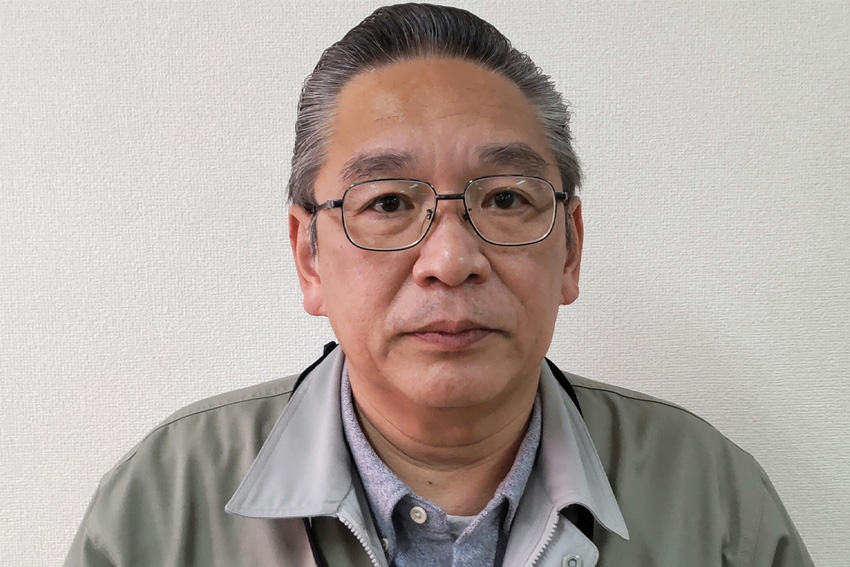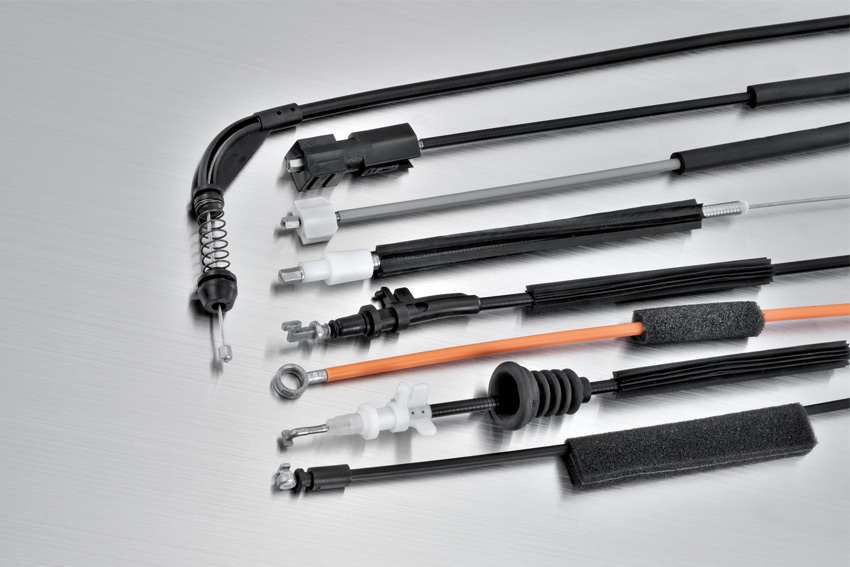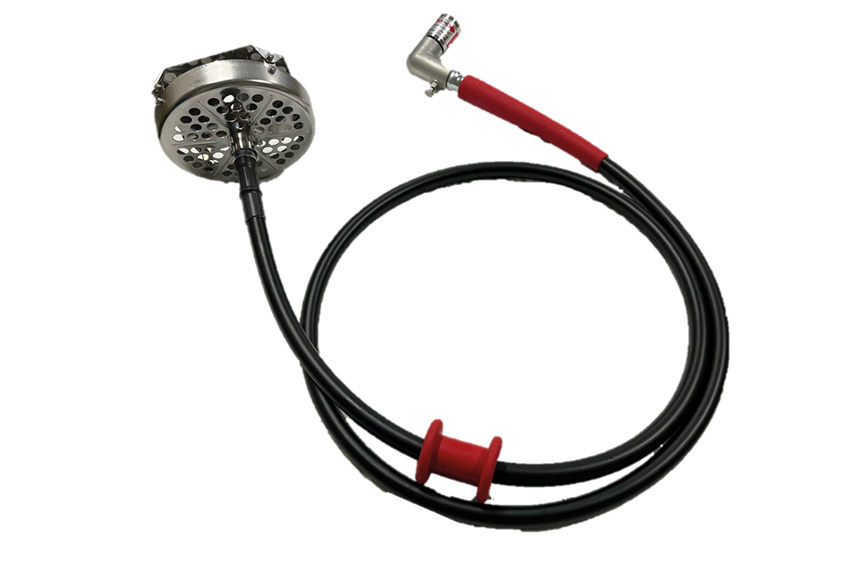With decades of experience, Kyosei Corporation supplies control cables to diverse industries including agriculture and heavy machinery from production bases in Japan, India, and China, which enables it to supply tailored solutions for customer needs.

Could we start with a quick introduction to your company? Tell us about Kyosei Corporation, your main competencies, and what core strengths allow you to stand out among your competition.
To give you a little introduction to our company, we are Kyosei Corporation, a company located only 30 minutes away from Kansai Airport. We were established in December 1978, meaning we are now 47 years old in 2024. Our financial year ends in May, and our capital is JPY 40.4 million with our latest sales performance being JPY 1.3 billion. We have 40 employees working for our firm. We have ISO 9001 and 14001 certifications and our main bank is Risona Bank.
Our primary focus is on manufacturing pull-type control cables, with an additional aspect of our business dedicated to trade aluminum die casting made by our JV manufacturer located in China. Our current capacity is 5 million cables per year. Our production site is 2,116 square meters total, so let me now explain what I mean by “total.” You might be asking why customers buy our cables, and I think this comes down to the rich and storied experiences of the Kyosei Corporation. We have more than 40 years of experience supplying control cables to a wide range of industries such as agriculture and heavy machinery. Additionally, the Kyosei Group as a whole is committed to continual development and I think this represents our strength as a group. We understand what control cables are and we are able to leverage companies in China, the US, and India. Wherever a customer is, we can supply our control cables at competitive prices.
Our group consists of Kyosei Corporation Japan as well as Wuxi Gongcheng Company, our JV company in China that is located just two and half hours from Shanghai. Additionally, we have Kyosei International operating out of Chicago Illinois, and Kyosei Trading located in Shanghai. Our latest joint venture is Deusch Kyosei Engineering operating in India with their headquarters in Noida, a suburb of Delhi. They are also proud that they’ve developed another factory in the Southeast side of India in Chennai, on top of the Northern side of India because their main customer is Maruti Suzuki. In total that is five plants and six offices for four countries.
Back in Kyosei Japan, 50% of our sales capabilities go to the agricultural industry. This is mainly for the domestic market for products such as lawnmowers. 30% goes to the automotive industry as well as cables for things such as bicycles. Another application is for prevention wires because as you are aware, Japan has a lot of natural disasters. In this case, our cables are used for LED lights which are used for high-ceilinged. We have a number of esteemed customers including Panasonic and indirect supplies to Kubota, and Yanmar.
Let me elaborate on our earlier discussion about the new factory adjacent to our office. We've designated 1,200 square meters for in-house manufacturing of control cables and outer casings. Additionally, we're considering bringing the production of certain component parts in-house soon. We established our new facility to cater to the high demands of customers and to deal with the expected insecurity of child parts. As a countermeasure to natural disasters, our brand-new buildings have space to evacuate both employees and surrounding residents.

It is our belief that Japanese manufacturers are facing a pivotal time with policies in the US, for example forcing companies to diversify their supply chains to reduce country risk with China. Japan is known for its reliability and advanced technologies, and coupled with the fact that the JPY right now is weak, we believe that now is an ideal time since Japan is once again very attractive and cost-effective on the international scene. Do you agree with this premise, and what are the advantages of Japanese suppliers in this macroeconomic environment?
Yes, I do agree. There are many benefits to the weak JPY, however, most of those are only beneficial to export-oriented companies. This means that companies operating in foreign countries can also benefit. Our company is operating in Japan and therefore we are import oriented, meaning that we are hit hard with increased costs.
Some Japanese companies are benefiting from the situation since the Japanese economy has been stable. Japanese companies have a good evaluation globally in terms of the technology level and quality management. The Japanese workforce is also known for its high level of skills. Unfortunately, although many companies are benefiting from the weak JPY, my company is very labor-intensive and domestic-oriented, therefore we are not benefiting from the weak JPY. This is why we’ve tried to expand our business to foreign countries.
The global power and control cable market is valued at USD 131 million in 2023 and is expected to grow up to USD 211 million by 2030. How do you foresee the next 12 months in your industry and what do you believe will be the main growth drivers moving forward?
The situation is different depending on the country, so first I will talk about Japan. After COVID-19 many companies accumulated inventory and this created a bad situation for Kyosei Japan. We are hoping that towards the end of 2024, inventory will be adjusted to clear the backlog. Overall, in Japan, the automobile sector is doing well but sales of control cables are declining. On the plus side, sales of aluminum die casts have remained steady.
Next, I will talk about China. We produce control cables and aluminum die cast for automobiles in China, and we are expecting larger sales this year, especially when compared to COVID-19 levels. We have two cable manufacturing factories in China which are now receiving inquiries from Chinese car manufacturers. Other cable manufacturers in China don’t seem to be doing well, but our facilities are performing to our expectations. Currently, we own 15% shares in China with Wuxi Gongcheng Diecast.
Among all of the industries you cater to, is there one that you believe has the most potential for future growth? Are there any new fields or sectors you would like to cater your products to in the future?
Potential industries we are looking at are the semiconductor industry and further expansion within the automotive industry. The industries we have been catering to are mature, so I don’t see any possibilities to grow significantly in Japan. Regarding agricultural machines, those are getting bigger so as a result the number of cables used will decline.

One of your standout products is a pull control cable, and you offer clients an impressive choice of cables to fit the needs of various industries. Two elements are critical with control cables, the outer casing, and the wire rope material inside. Can you guide us through your selection criteria for outer casings and wire rope materials to meet the specific demands of your various clients?
Our company operates the assembly phase of manufacturing so, therefore, we buy our cables and outer casings from other companies. We buy the outer casings from our Chinese factories. Those inner cables and outer casings are based on “Japanese Automobile Standards Organization” (JASO). The history of control cables in Japan is very long and we are based on Japanese industry specifications.
We do provide advice to clients regarding the selection of cables, but in terms of the inner cables and outer casings, we just purchase from other companies. We have a long relationship with esteemed clients such as Kubota and Yanmar, to which we provide products on an OEM basis. Drawings are provided by customers, however, since drawings rarely require adjustments we don’t have too many opportunities to discuss requirements with customers. One thing we do offer is that when a client is launching a new product with our control cables we will bring our parts to their production facilities to assemble alongside the client.
Previous interviews with key players in the industry have always resulted in an emphasis on collaborations and co-creation as a way of enhancing competitiveness and unlocking international markets. What role do partnerships play in your business model and are you searching for any new partnerships or collaboration opportunities either domestically or in overseas markets?
We have received various requests from companies and sometimes we cannot fulfill these on our own. In those cases, we conduct partnerships with other companies and we understand that partnerships are important for our business.
At the moment we are particularly looking for new partners overseas and that is because I have less than two years left of my presidency. It is difficult to start a joint venture now considering that my successor will be taking over in two years. My current objectives are to reorganize the foreign factories and for that reason, we closed factories in Indonesia. I also plan on reorganizing our trading company in Shanghai so the company is in a good position when I pass on to the next generation.
Considering you have operations in many countries around the world, where is next in terms of Kyosei’s international expansion?
I think that although nothing is going to happen in this regard during my remaining years here, it is still important for the company to look overseas, especially when the next generation succeeds in my position as president. As far as targets, chances are it will be the next emerging country after India wherever that is.
Imagine we come back on the last day of your presidency and have this interview again. What goals or dreams would you like to achieve by the time you are ready to hand the baton onto the next generation of Kyosei executives?
The current chairman, who also happens to be the company's founder, assumed the role of president back in 1986. During this tenure, he spearheaded the establishment of our joint venture in China, despite facing opposition from the bank due to perceived risks associated with China at the time. Undeterred, he forged ahead, recognizing the potential, and found a reliable counterpart in China who shared his vision. This joint venture was successful despite the bank’s objections and I think that has taught us to take risks in order to grow as a company. It was this thinking that allowed me to push ahead with further international expansion without hesitation. I want the next generation to never forget this pioneering spirit and to always push ahead without hesitation.
0 COMMENTS